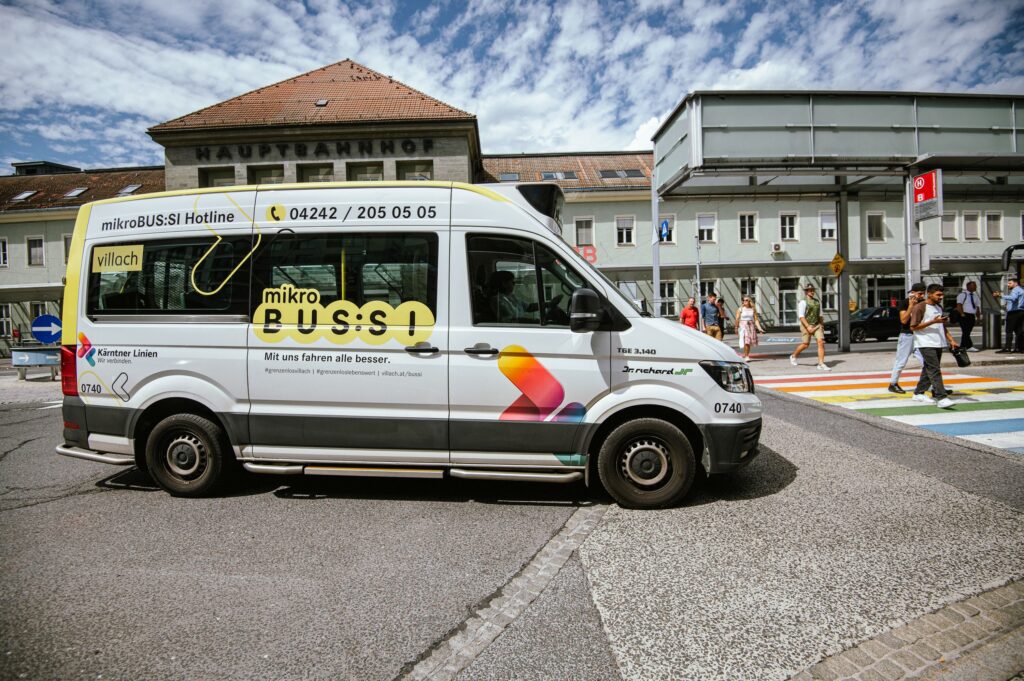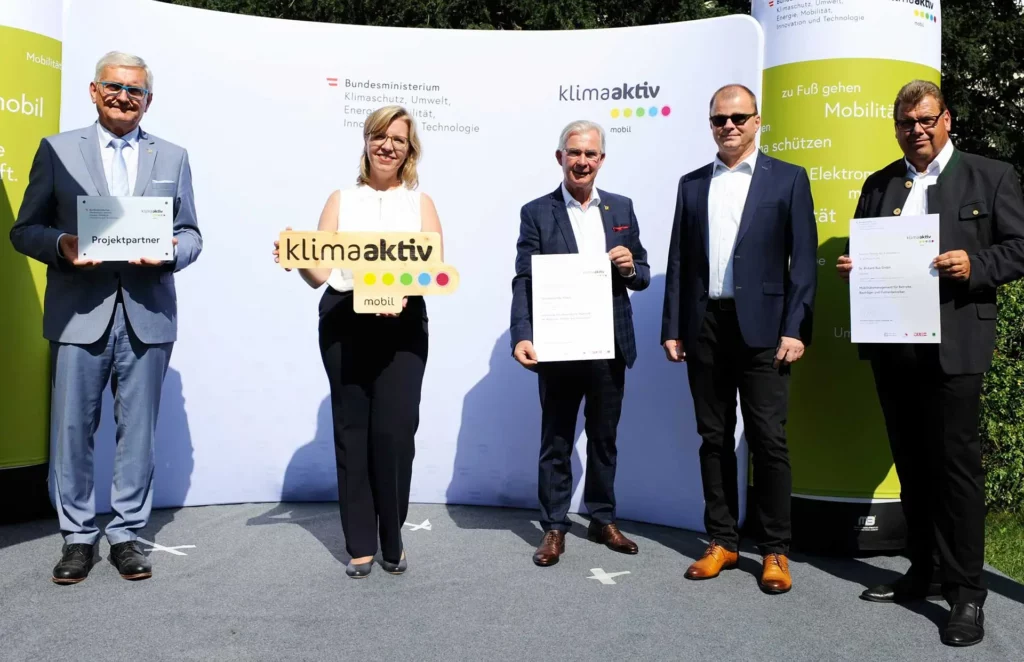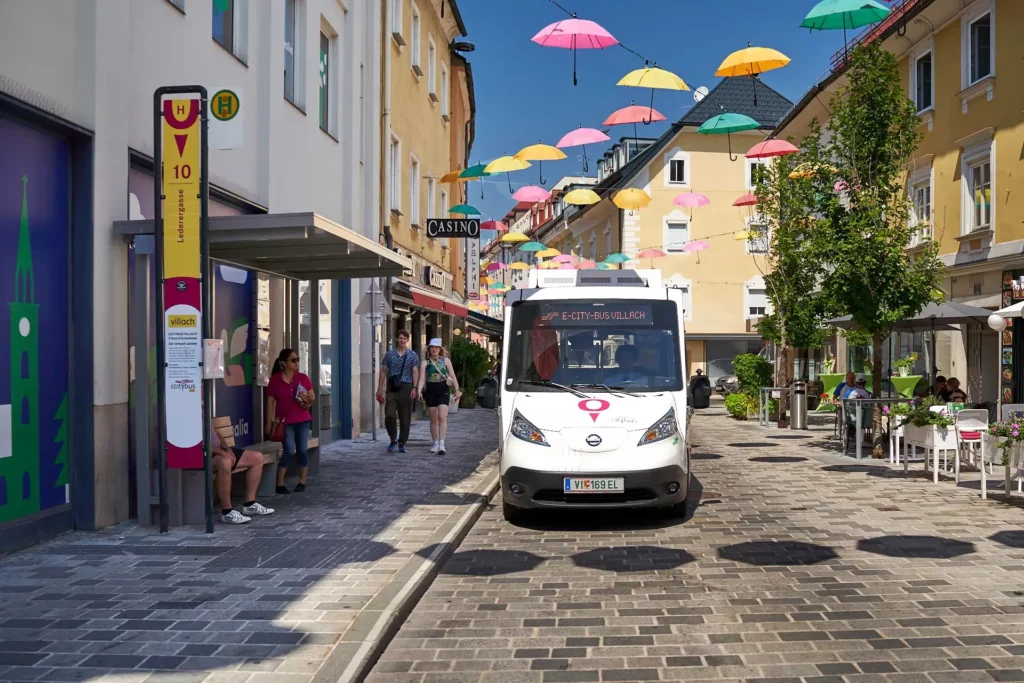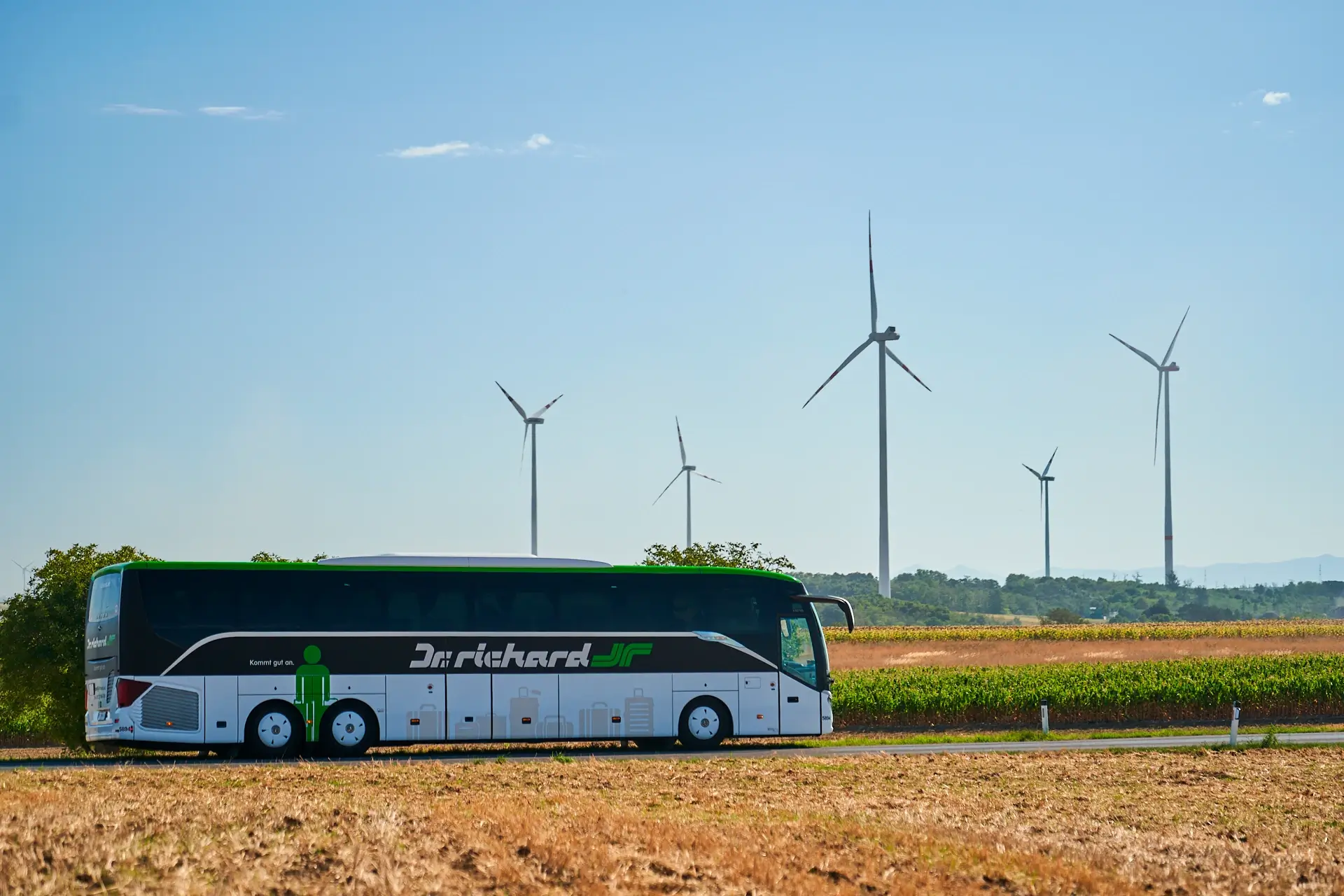
Sustainability at
Dr. Richard
The bus is one of the most environmentally friendly ways to travel. By traveling with Dr. Richard, you’re helping to protect the environment!
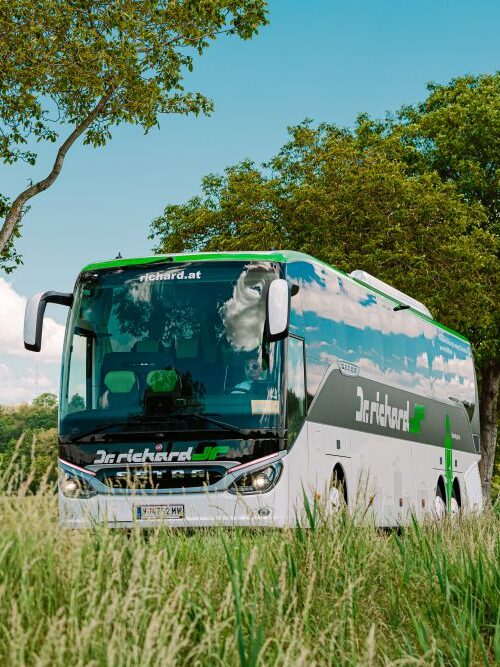
Dr. Richard – a green company
Green is not only the color of the Dr. Richard Group’s logo – it’s also the guiding principle of our long-established family business. Environmental protection plays a central role in our corporate efforts:
- In public transport, our first electric buses are already in operation. The number of zero-emission vehicles will be significantly expanded in the coming years. In 2025, a pioneering project was launched at the premises of our subsidiary Albus Salzburg: an innovative photovoltaic system covering 4,270 m², which produces green electricity for the e-bus fleet.
- In addition to e-mobility, Dr. Richard uses HVO100, a sustainable biofuel, for both its regional and long-distance buses. All company-owned fueling stations in Austria have been fully converted to HVO100. These stations supply over two-thirds of the Group’s total fuel consumption. This change enables a reduction in CO2 emissions by up to 90%.
- Furthermore, all Dr. Richard coaches meet the highest ecological requirements of the “EURO 6 standard”. Our drivers receive regular training in eco-friendly driving techniques, helping to reduce fuel consumption and minimize tire wear. Finally, the Dr. Richard bus fleet is meticulously maintained and always up to date with the latest technology. Dr. Richard buses are among the most ecological buses in Europe!
Buses are one of the most environmentally friendly means of transport
Compared to most other forms of transport, buses are cleaner and more climate-friendly. They clearly outperform private vehicles, as a single bus can carry many more passengers, significantly reducing per-person emissions. This positive impact is clearly illustrated in the chart below, based on data from the Austrian Environment Agency.

Status: May 2025
Environmentally friendly tour buses

Sustainable HVO100 fuel
As a responsible company, Dr. Richard Group has a clear vision: to further develop sustainable mobility. For this purpose, all of Dr. Richard Group in Austria switched entirely to HVO100, a fossil-free fuel. This enables a reduction of up to 90% of CO2 emissions.
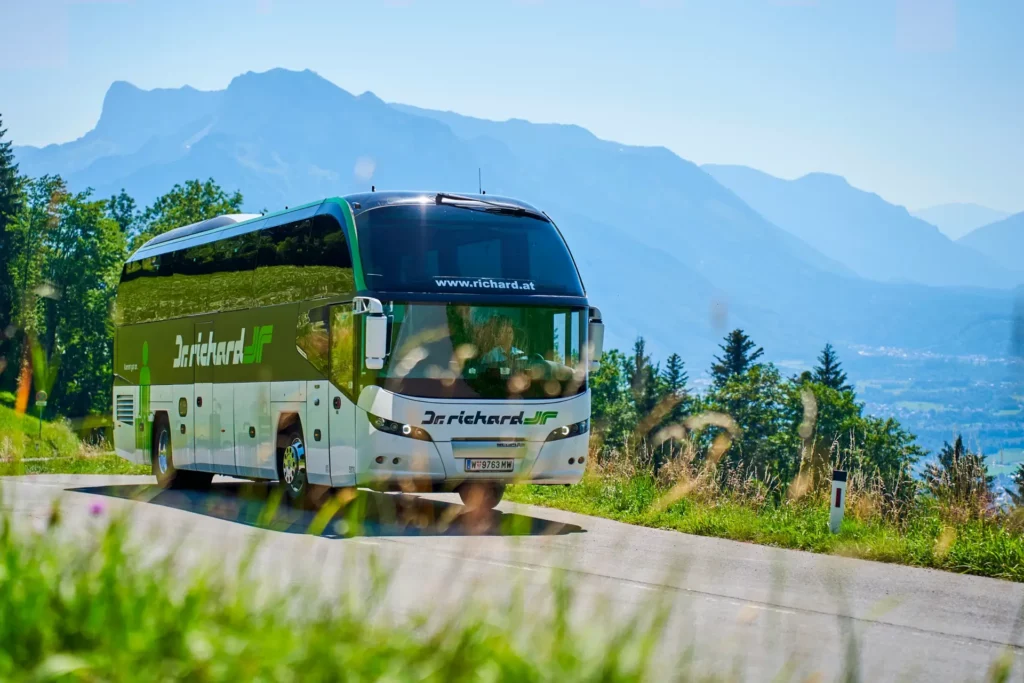
Environmentally friendly emission standards & smart fleet management
For many years, Dr. Richard has been focusing on low-emission coaches, which are exclusively equipped with engines of the Euro 6 class, the most environmentally advanced emission standard currently available. Beyond vehicle technology, we are strongly committed to reducing empty mileage, a critical sustainability factor in the coach transport sector. Through intelligent scheduling and coordinated fleet management across Vienna, Salzburg, Burgenland, Styria, and Carinthia, we efficiently minimize non-revenue trips and help conserve natural resources.
Environmentally friendly urban buses
Innovative green propulsion technologies
In close collaboration with industry experts, we are actively advancing the future of public transportation. Through targeted pilot programs, we acquire critical operational insights into cutting-edge, climate-neutral propulsion systems. The Dr. Richard Group has been testing battery-powered electric buses since 2017. The test operation of a hydrogen-powered fuel cell bus was successfully implemented in 2020. By systematically sharing our findings with vehicle manufacturers, we play a pivotal role as a bus operator in fostering the development and refinement of alternative propulsion technologies.
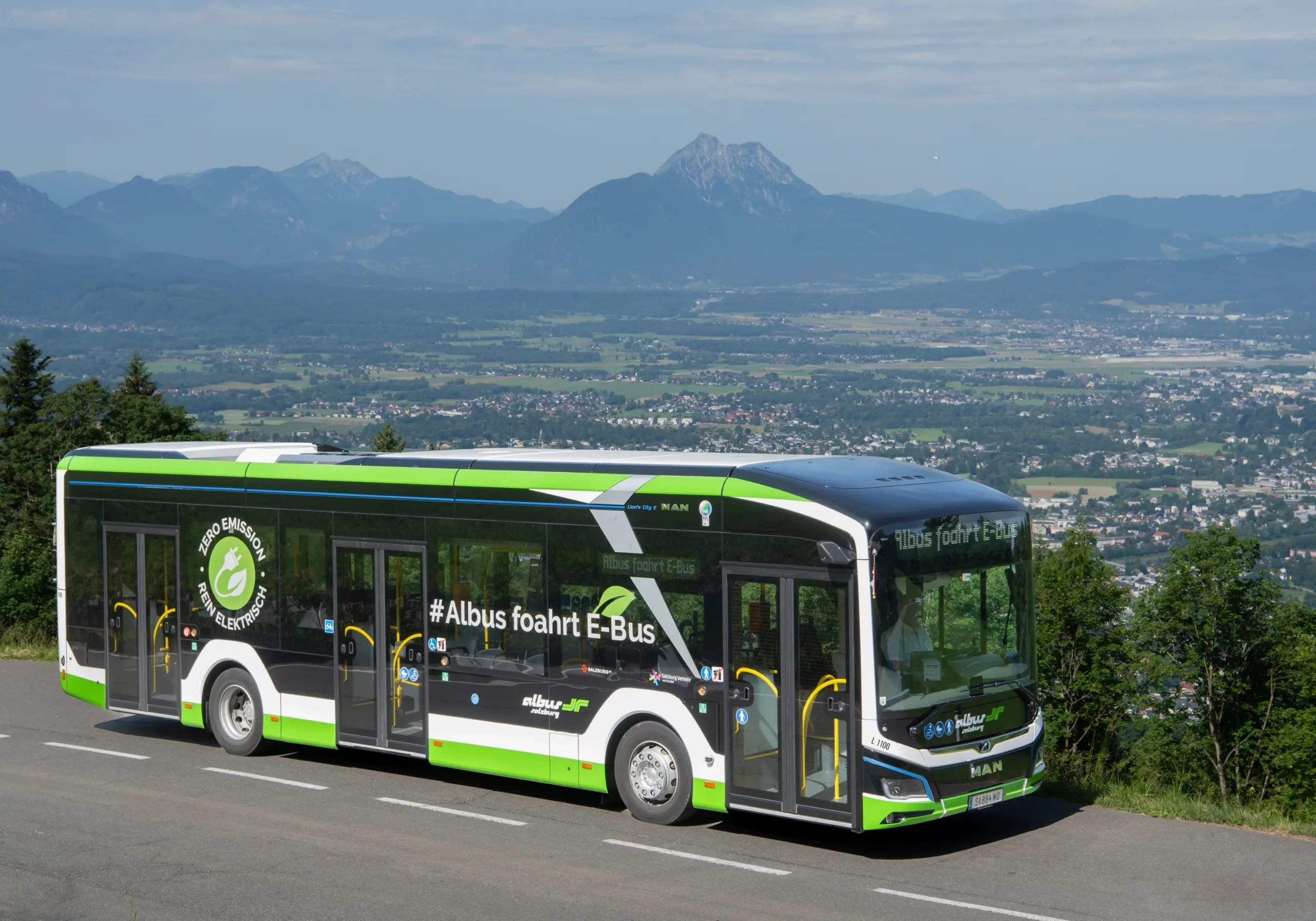
Electric buses in regular operation in Salzburg
Under the initiative #AlbusDrivesElectric, our subsidiary Albus Salzburg currently operates a fleet of 15 electric buses in regular service. This exemplifies the deployment of tomorrow’s propulsion technology, already in active use today. One of the vehicles is equipped with a 480 kW battery, providing an impressive range of 370 kilometers on a single charge. This marks a significant milestone in the advancement of public e-mobility. The fully electric drivetrain results in zero pollutant and CO₂ emissions, ensuring truly “Zero Emission” operation. The Albus Salzburg bus fleet is to be to expanded to 80 electric buses by the end of 2028.
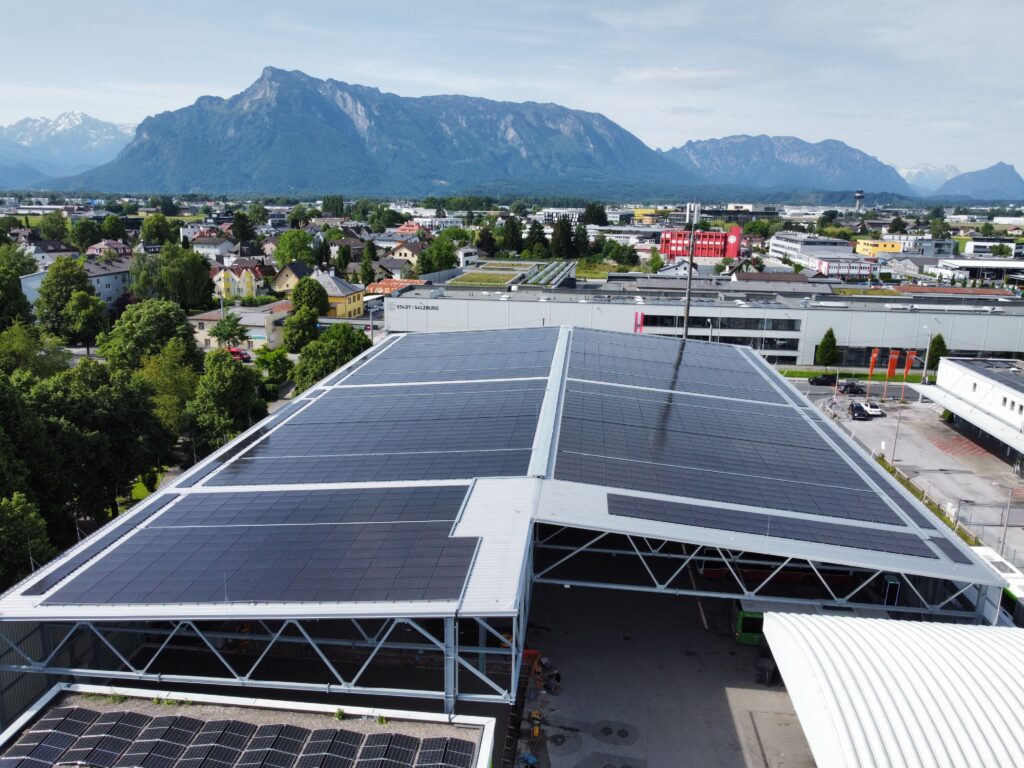
Award-winning flagship initiative: photovoltaic system driving sustainable mobility
In 2025, the Dr. Richard Group launched a groundbreaking flagship project at the Albus Salzburg operational facility, setting a new benchmark for the Austrian bus industry. A newly constructed rooftop spanning 4,270 m² (77 m x 55 m) was outfitted with a state-of-the-art photovoltaic system with a capacity of 940 kWp. Combined with the existing solar installation, the total peak output exceeds 1.4 MW. The energy produced is dedicated to powering the electric bus fleet, reinforcing our commitment to sustainable mobility.
The project with the title “Soak up the sun for tomorrow – photovoltaics as a power source for emission-free public transport” has already been awarded the VCÖ Mobility Prize Salzburg in the category “Energy and resource conservation, circular economy”.
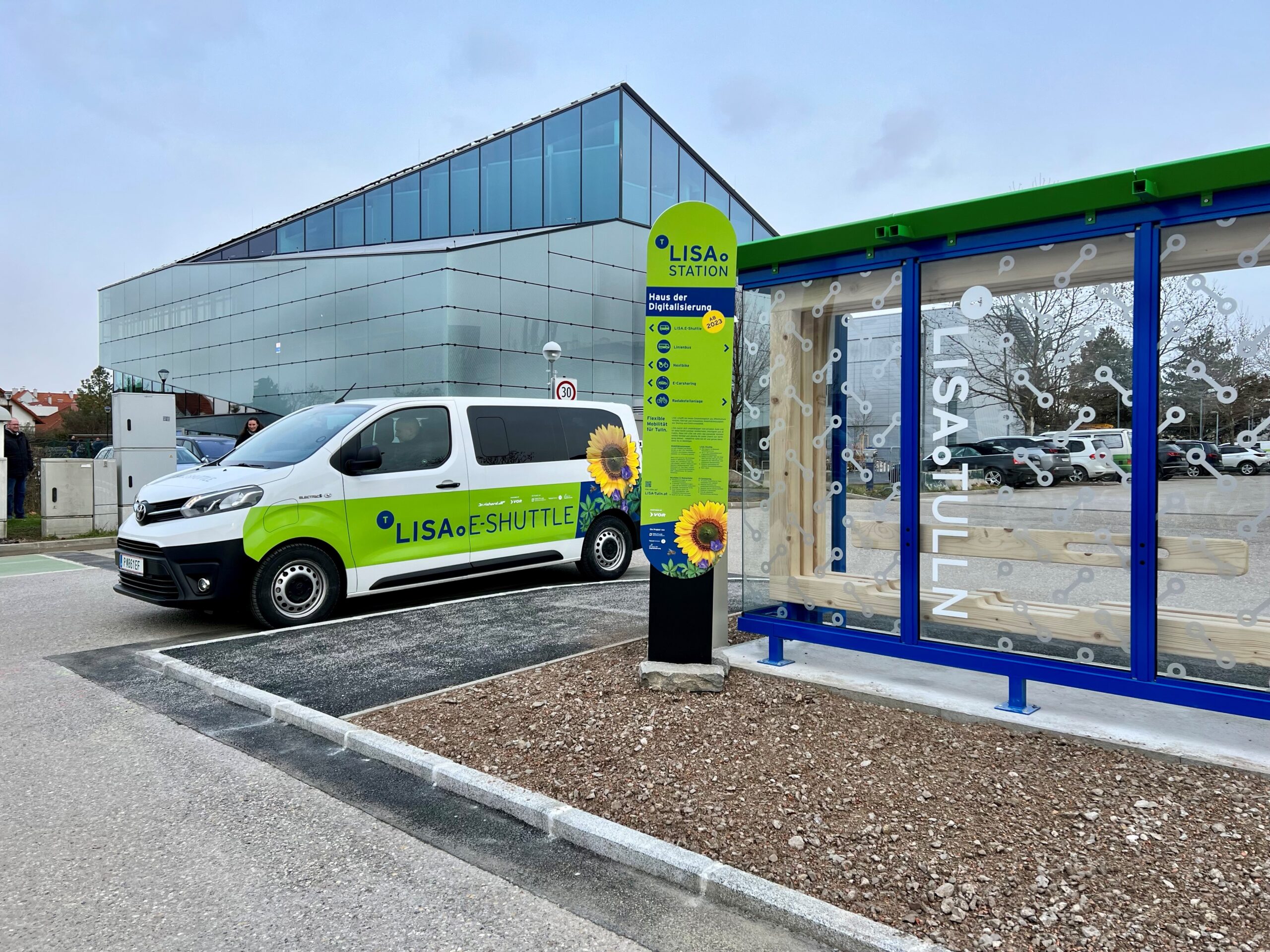
LISA e-shuttle in Lower Austria
Dr. Richard places great emphasis on electromobility in Lower Austria through the operation of the innovative LISA E-Shuttle on-demand taxi system in Tulln, utilizing a fully electric vehicle fleet. Passengers can conveniently book shuttle services via app or phone, with transport provided to predetermined stops. The LISA E-Shuttle delivers a sustainable, efficient, and comfortable mobility solution, effectively addressing the “last mile” challenge, all without the need for private car usage. This initiative exemplifies our commitment to advancing environmentally responsible transportation alternatives.
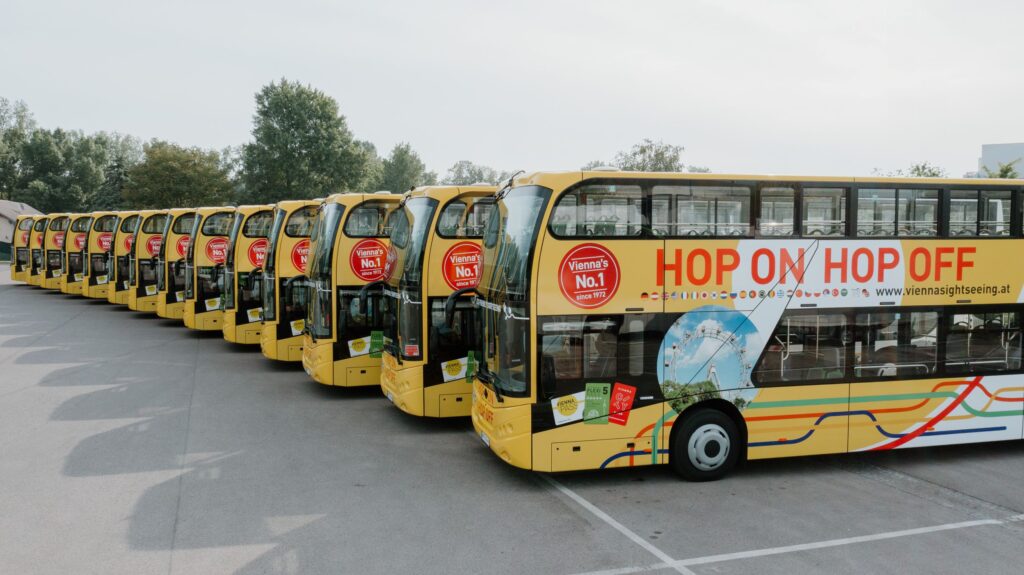
Vienna sightseeing fully embraces e-mobility
Since May 2025, the entire HOP ON HOP OFF fleet of Vienna Sightseeing Tours has been operating with 100% electric vehicles. As a shareholder of Vienna Sightseeing Tours, the specialist in city tours in and around Vienna, Dr. Richard is proud to mark another milestone towards environmentally friendly mobility. This transition significantly reduces noise pollution and improves air quality, especially in heavily trafficked districts such as Vienna’s city center and represents a crucial step toward the city’s goal of zero-emission mobility. With the new fleet, Vienna Sightseeing achieves annual CO₂ savings of approximately 666 tonnes, averaging 39 tonnes per bus.
Awards in Carinthia
In 2025 the micro BUS:SI, developed by Dr. Richard Group in Villach was recognized as an exemplary project as part of the VCÖ Carinthia Mobility Prize. The minibuses complement the existing route network, have space for eight people and are particularly barrier-free.
Previously, Dr. Richard Kärnten is happy about an award. Together with the municipality of Villach, Dr. Richard relaunched the Villach Citybus in Carinthia. In the period from 2020 to 2022, the city bus route was served by an electric bus that had space for 33 people, had a ramp for wheelchair users and people with walking disabilities, and was available to passengers free of charge. For this pioneering project, together with the municipality of Villach, we were recognized as a klimaaktiv mobil project partner.
Eco-friendly driving
Green also means maintaining an economical driving style. Every year, some of our drivers complete training courses to practice eco-driving. Eco-driving – that is, anticipatory driving, driving at low revs, and constantly checking and adjusting settings, such as those of the air conditioning system – can reduce CO2 emissions and environmentally harmful tire wear.
We take responsibility
Would you like to learn more about our responsible and sustainable actions? Our Sustainability Report outlines how the Dr. Richard Group fulfills its responsibilities towards the environment, its employees, and society as a whole.
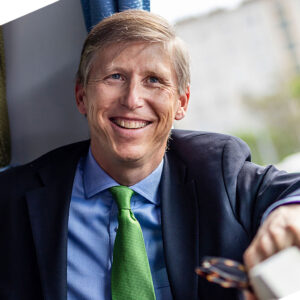
With our mobility services, we are at the cutting edge.
Dr. Ludwig Richard
